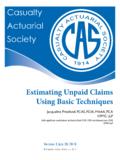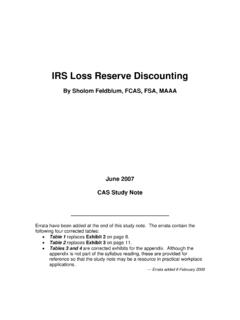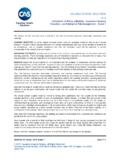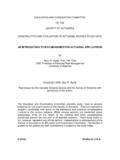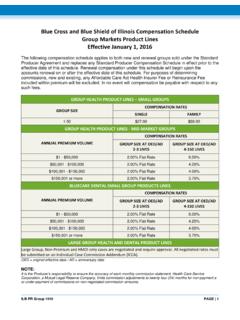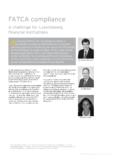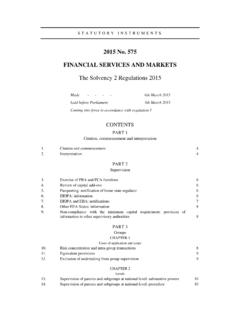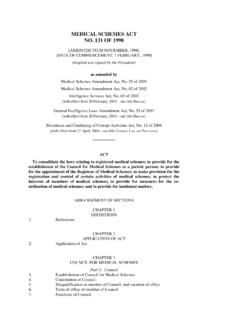Transcription of Extreme Value Theory as a Risk Management Tool
1 Extreme Value Theory as a Risk Management Tool By Paul Embrechts, Sidney I. Resnick, and Gennady Samorodnitsky North American Actuarial Journal, Volume 3, Number 2, April 1999 Y Copyright 2010 by the Society of Actuaries, Schaumburg, Illinois. Posted with permission. Name /8042/03 04/21/99 09:19AM Plate # 0pg 30 # 130 NAAJ(SOA)EXTREMEVALUETHEORYAS ARISKMANAGEMENTTOOL*Paul Embrechts, Sidney I. Resnick, and Gennady Samorodnitsky ABSTRACTThe financial industry, including banking and insurance, is undergoing major changes. The(re)insurance industry is increasingly exposed to catastrophic losses for which the requested coveris only just available. An increasing complexity of financial instruments calls for sophisticated riskmanagement tools.
2 The securitization of risk and alternative risk transfer highlight the conver-gence of finance and insurance at the product level. Extreme Value Theory plays an importantmethodological role within risk Management for insurance, reinsurance, and 1 California Earthquake Data1971 INTRODUCTIONC onsider the time series in Table 1 of loss ratios(yearly data) for earthquake insurance in Californiafrom 1971 through 1993. The data are taken fromJaffe and Russell (1996).On the basis of these data, who would have guessedthe 1994 Value of Indeed, on the 17th of Jan-uary of that year the Northridgeearthquake hit California, causing an insured damageof $ billion and a total damage of $30 billion,making 1994 the year with the third highest loss bur-den (natural catastrophes and major losses) in the his-tory of insurance.
3 The front-runners are 1992 (theyear of hurricane Andrew) and 1990 (the year of thewinter storms Daria and Vivian). For details on these,see Sigma (1995, 1997).The reinsurance industry experienced a rise in bothintensity and magnitude of losses due to natural and* A first version of this paper was presented by the first author as aninvited paper at the XXVIIIth International ASTIN Colloquium inCairns and published in the conference proceedings under the title Extremes and Insurance. Paul Embrechts, , is Professor in the Department of Mathe-matics, ETHZ, CH-8092 Zurich, Switzerland, e-mail, Sidney I. Resnick, , is Professor in the School of OperationsResearch and Industrial Engineering, Cornell University, Rhodes Hall /ETC Building, Ithaca, New York 14853, e-mail, Gennady Samorodnitsky, , is Associate Professor in the Schoolof Operations Research and Industrial Engineering, Cornell Univer-sity, Rhodes Hall / ETC Building, Ithaca, New York 14853, catastrophes.
4 For the United States alone,Canter, Cole, and Sandor (1996) estimate an approx-imate $245 billion of capital in the insurance and re-insurance industry to service a country that has $25 30 trillion worth of property. It is no surprise that thefinance industry has seized upon this by offering (of-ten in joint ventures with the (re)insurance world)properly securitized products in the realm of catastro-phe insurance. New products are being born at an in-creasing pace. Some of them have only a short life,others are reborn under a different shape, and somedo not survive. Examples include: Catastrophe (CAT) futures and PCS options (Chi-cago Board of Trade). In these cases, securitizationis achieved through the construction of derivativeswritten on a newly constructed industry-wide loss-ratio index.
5 Convertible CAT bonds. The Winterthur convertiblehail-bond is an example. This European-type con-vertible has an extra coupon payment contingent onthe occurrence of a well-defined catastrophic (CAT)event: an excessive number of cars in Winterthur sName /8042/03 04/21/99 09:19AM Plate # 0pg 31 # 2 EXTREMEVALUETHEORY AS ARISKMANAGEMENTTOOL31 NAAJ(SOA)Figure 2 Actuarial Credit Risk Accounting (ACRA)Figure 11987 CrashSwiss portfolio damaged in a hail storm over a spe-cific time period. For details, see Schmock (1997).Further interesting new products are the multiline,multiyear, high-layer (infrequent event) products,credit lines, and the catastrophe risk exchange (CA-TEX). For a brief review of some of these instruments,see Punter (1997).
6 Excellent overviews stressing thefinancial engineering of such products are Doherty(1997) and Tilley (1997). Alternative risk transfer andsecuritization have become major areas of applied re-search in both the banking and insurance are actively taking part in some of the newproduct development and therefore have to considerthe methodological issues underlying these and simi-lar , similar methods have recently been intro-duced into the world of finance through the estima-tion of Value at risk (VaR) and the so-called shortfall;see Bassi, Embrechts, and Kafetzaki (1998) andEmbrechts, Samorodnitsky, and Resnick (1998). Value At Risk for End-Users (1997) contains a re-cent summary of some of the more applied generally, extremes matter eminently within theworld of finance.
7 It is no coincidence that Alan Green-span, chairman of the Federal Reserve, remarkedat a research conference on risk measurement andsystemic risk (Washington, , November 1995)that Work that characterizes the statistical distri-bution of Extreme events would be useful, as well. For the general observer, extremes in the realm offinance manifest themselves most clearly throughstock market crashes or industry losses. In Figure 1,we have plotted the events leading up to and includingthe 1987 crash for equity data (S&P). Extreme valuetheory (EVT) yields methods for quantifying suchevents and their consequences in a statistically opti-mal way. (See McNeil 1998 for an interesting discus-sion of the 1987 crash example.)
8 For a general equitybook, for instance, a risk manager will be interestedin estimating the resulting down-side risk, which typ-ically can be reformulated in terms of a quantile for aprofit-and-loss is also playing an increasingly important rolein credit risk Management . The interested readermay browse Morgan s web site (http: // ) for information on CreditMetrics. It isno coincidence that big investment banks are lookingat actuarial methods for the sizing of reserves to guardagainst future credit losses. Swiss Bank Corporation,for instance, introduced actuarial credit risk account-ing (ACRA) for credit risk Management ; see Figure their risk measurement framework, they use thefollowing definitions: Expected loss: the losses that must be assumed toarise on a continuing basis as a consequence of un-dertaking particular business Unexpected loss: the unusual, though predictable,losses that the bank should be able to absorb in thenormal course of its business Stress loss: the possible although improbable Extreme scenarios that the bank must be able offers an important set of techniques for quan-tifying the boundaries between these different lossclasses.
9 Moreover, EVT provides a scientific languagefor translating Management guidelines on theseName /8042/03 04/21/99 09:19AM Plate # 0pg 32 # 332 NORTHAMERICANACTUARIALJOURNAL,VOLUME3, NUMBER2 NAAJ(SOA)boundaries into actual numbers. Finally, EVT helps inthe modeling of default probabilities and the estima-tion of diversification factors in the Management ofbond portfolios. Many more examples can be is our aim in this paper to review some of thebasic tools from EVT relevant for industry-wide inte-grated risk Management . Some examples toward theend of this paper will give the reader a better idea ofthe kind of answers EVT provides. Most of the materialcovered here (and indeed much more) is found in Em-brechts, Klu ppelberg, and Mikosch (1997), which alsocontains an extensive list of further references.
10 Forreference to a specific result in this book, we will oc-casionally identify it as EKM. 2. THEBASICTHEORYThe statistical analysis of extremes is key to many ofthe risk Management problems related to insurance,reinsurance, and finance. In order to review some ofthe basic ideas underlying EVT, we discuss the mostimportant results under the simplifying iid assump-tion: losses will be assumed to be independent andidentically distributed. Most of the results can be ex-tended to much more general models. In Section first indication of such a generalization will be this paper, losses will always be denotedas positive; consequently we concentrate in our dis-cussion below on one-sided distribution functions(df s) for positive random variables (rv s).

